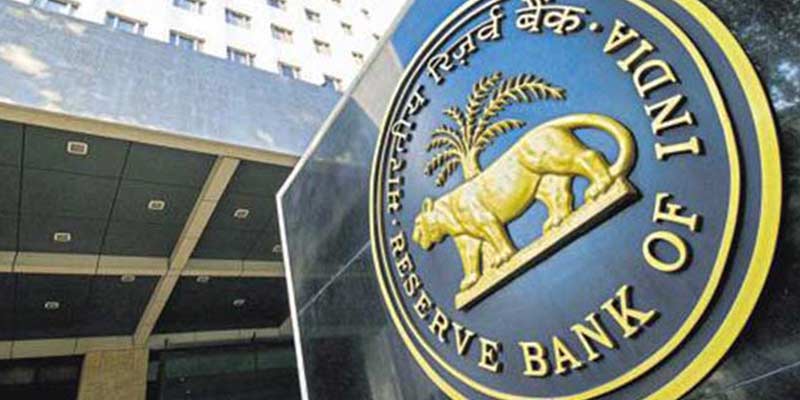- India
- Jun 06
Why Monetary Policy Committee cut repo rate by 50 bps to 5.5%?
• The Reserve Bank of India (RBI) cut the repo rate by 50 basis points to a three-year low of 5.5 per cent on June 6.
• It is expected to provide relief to home, auto and corporate loan borrowers.
• Repo rate, which is also known as the benchmark interest rate, is the rate at which the RBI lends money to the banks for a short term. Reverse repo rate is the borrowing rate at which RBI borrows money from banks for a short term.
• The Monetary Policy Committee (MPC) held its 55th meeting from June 4 to 6 under the chairmanship of RBI Governor Sanjay Malhotra.
• After assessing the current and evolving macroeconomic situation, the MPC voted to reduce the policy repo rate by 50 basis points (bps) to 5.50 per cent with immediate effect.
• This is the first time since COVID-19 pandemic that the RBI has passed on three consecutive rate cuts, beginning February 2020.
• Since February 2025, the RBI has reduced the policy rate by 100 basis points. In its previous policy review in April, it had also trimmed the repo rate by 25 basis points to 6 per cent.
Rationale for these decisions
• The uncertainty around the global economic outlook has ebbed somewhat since the MPC met in April in the wake of temporary tariff reprieve and optimism around trade negotiations.
• However, it continues to remain elevated to weaken sentiments and lower global growth prospects.
• Accordingly, global growth and trade projections have been revised downwards by multilateral agencies. Market volatility has eased in the recent period with equity markets staging a recovery, dollar index and crude oil softening though gold prices remain high.
• According to the provisional estimates released by the National Statistical Office (NSO) on May 30, 2025, real GDP growth in Q4:2024-25 stood at 7.4 per cent as against 6.4 per cent in Q3. For 2024-25, real GDP growth was placed at 6.5 per cent, while real GVA recorded a growth of 6.4 per cent.
• Inflation has softened significantly over the last six months from above the tolerance band in October 2024 to well below the target with signs of a broad-based moderation.
• While food inflation outlook remains soft, core inflation is expected to remain benign with easing of international commodity prices in line with the anticipated global growth slowdown.
• The inflation outlook for the year is being revised downwards from the earlier forecast of 4 per cent to 3.7 per cent. Growth, on the other hand, remains lower than our aspirations amidst a challenging global environment and heightened uncertainty.
• Thus, it is imperative to continue to stimulate domestic private consumption and investment through policy levers to step up the growth momentum.
• This changed growth-inflation dynamics calls for not only continuing with the policy easing but also frontloading the rate cuts to support growth. Accordingly, the MPC voted to reduce the policy repo rate by 50 bps to 5.50 per cent.
• After having reduced the policy repo rate by 100 bps in quick succession since February 2025, under the current circumstances, monetary policy is left with very limited space to support growth. Hence, the MPC also decided to change the stance from accommodative to neutral.
• The MPC will be carefully assessing the incoming data and the evolving outlook to chart out the future course of monetary policy in order to strike the right growth-inflation balance. The fast-changing global economic situation too necessitates continuous monitoring and assessment of the evolving macroeconomic outlook.
Monetary policy by RBI
• Monetary policy refers to the use of monetary instruments under the control of the central bank to regulate magnitudes such as interest rates, money supply and availability of credit with a view to achieving the ultimate objective of economic policy.
• The Reserve Bank of India (RBI) is vested with the responsibility of conducting monetary policy. This responsibility is explicitly mandated under the Reserve Bank of India Act, 1934.
• The primary objective of monetary policy is to maintain price stability while keeping in mind the objective of growth. Price stability is a necessary precondition to sustainable growth.
• In May 2016, the Reserve Bank of India (RBI) Act, 1934 was amended to provide a statutory basis for the implementation of the flexible inflation targeting framework.
• The amended RBI Act also provides for the inflation target to be set by the government of India, in consultation with the Reserve Bank, once in every five years.
• The Monetary Policy Committee (MPC) constituted by the central government under Section 45ZB determines the policy interest rate required to achieve the inflation target.
Members of MPC
• There are six members in the MPC and the RBI governor is the chairperson.
• As per the provisions of the RBI Act, out of the six members of the Monetary Policy Committee, three members will be from the RBI and the other three Members of MPC will be appointed by the central government.
Composition of MPC:
a) The Governor of the RBI — chairperson, ex officio
b) Deputy Governor of the RBI, in charge of Monetary Policy — member, ex officio
c) One officer of the Bank nominated by the Central Board — member, ex officio
d) Three persons appointed by the central government — members.
• The MPC is required to meet at least four times in a year.
• The Reserve Bank’s Monetary Policy Department (MPD) assists the MPC in formulating the monetary policy.
Manorama Yearbook app is now available on Google Play Store and iOS App Store


